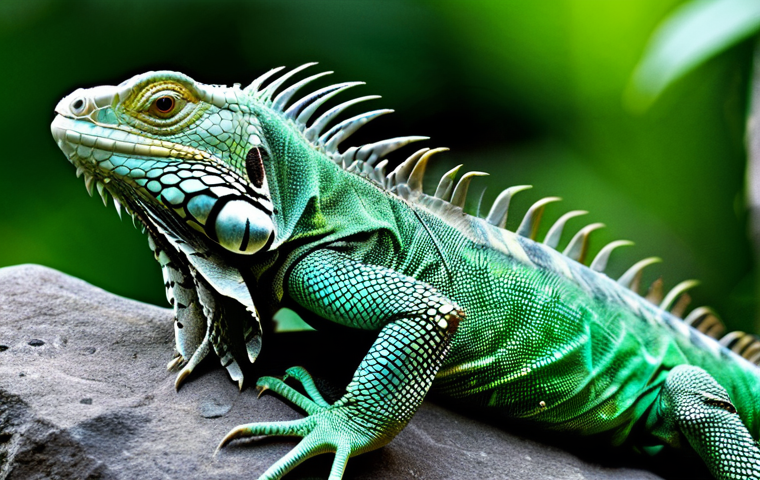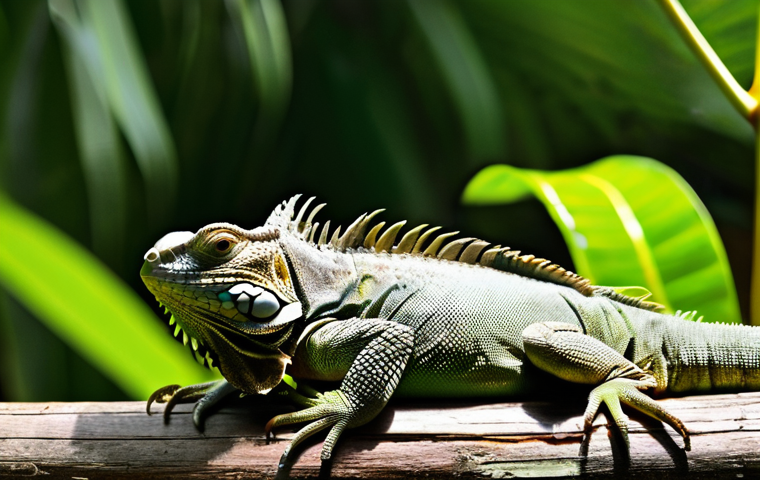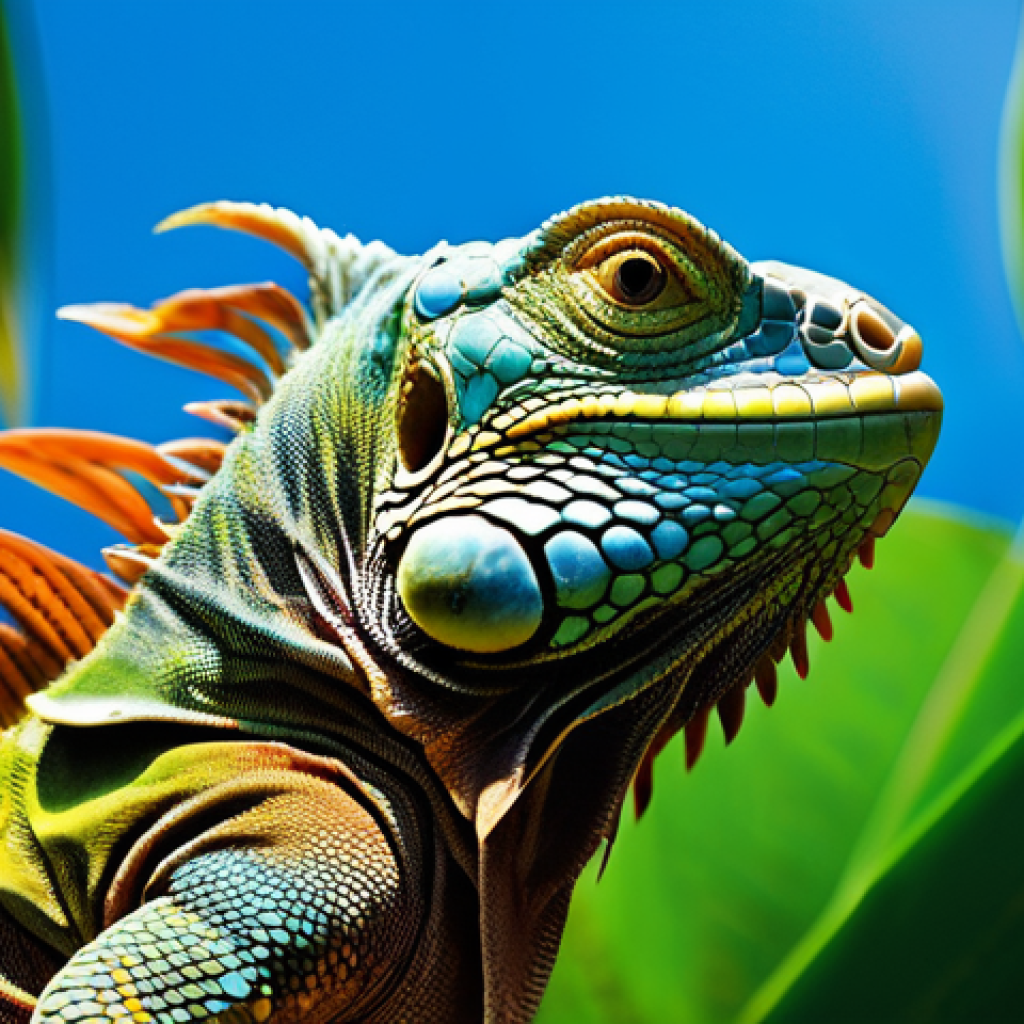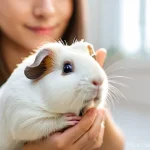You know, for years, I’ve been absolutely captivated by the silent, subtle world of iguanas. These incredible reptiles, often admired for their vibrant colors and calm demeanor, are actually communicating a complex language right before our eyes, but most of us totally miss it!
If you’ve ever owned one, or even just seen them basking in the sun, you might have noticed a mysterious head bob here, a quick tail flick there, and wondered, “What on earth are they trying to tell me?” It turns out, there’s a whole intricate system of body language, from dewlap displays to those infamous head bobs, that reveals everything from their mood to their territorial claims.
Honestly, getting into the specifics of iguana behavior has completely changed how I see these majestic creatures, and I bet it will for you too. Understanding their unique quirks isn’t just fascinating; it’s essential for anyone who wants to truly connect with or even just appreciate these ancient reptiles in our ever-evolving world, especially as exotic pet ownership trends continue to rise.
Ready to crack the code? Let’s dive in and uncover the fascinating secrets behind iguana behavior!
The Subtle Sway: Unpacking Head Bobs and Tail Whips

When I first started observing iguanas, those quick head bobs always struck me as a bit enigmatic. Were they greeting me? Showing off?
It turns out, these aren’t just random movements; they’re a core part of their communication toolkit, loaded with intent and meaning. It’s truly fascinating once you start to piece together the patterns, and honestly, it completely shifts your perspective on how intelligent and aware these reptiles truly are.
I’ve spent countless hours just watching, trying to decipher their silent conversations, and every time I think I’ve got it figured out, they surprise me with a new variation.
It’s a journey of discovery, really, and one that deepens my connection to these incredible animals. They’re constantly sending out signals about their mood, their territory, and even their desire to mate, all through these seemingly simple gestures.
It’s like they have their own secret sign language, and once you start to learn a few ‘words,’ a whole new world opens up.
Head Bobs: A Spectrum of Signals
The speed and intensity of an iguana’s head bob can tell you a lot. A slow, gentle bob might be a sign of contentment or a simple acknowledgment, almost like a casual nod between friends.
But if you see a rapid, almost frantic bobbing, especially when another iguana or a perceived threat is around, that’s a clear warning shot. It’s their way of saying, “Hey, this is my spot, and I’m ready to defend it.” I once saw my own iguana, Spike, give a series of incredibly fast head bobs when a new, much larger bird landed a little too close to his basking spot.
It was clear he was asserting dominance, even though the bird probably had no idea what he was doing. It’s not just about aggression though; head bobs are also a crucial part of courtship rituals.
Males will often perform elaborate, rhythmic bobs to impress females, showcasing their health and vigor. It’s a display of strength and confidence, and it’s truly a sight to behold when you understand the context.
From my personal experience, observing these nuanced head bobs helps me gauge Spike’s mood and anticipate his needs, making our bond stronger.
Tail Whips: Defiance and Defense
Beyond the head bobs, an iguana’s tail is another powerful communication tool. You might think a tail whip is just a random flick, but believe me, it’s anything but.
A sharp, sudden whip of the tail is usually a defensive maneuver, a clear indication that the iguana feels threatened and is prepared to strike. These tails are incredibly strong, and a full-force whip can actually pack quite a punch, so it’s best to respect that signal and give them space.
I’ve seen them use it against perceived predators, and even other iguanas that get too close for comfort. It’s an instinctual reaction, honed over millennia, to deter potential danger.
On the other hand, a slower, almost deliberate tail movement might indicate curiosity or even a slight agitation rather than outright aggression. It’s all about context, and the subtle differences in their body language are what make studying them so endlessly engaging.
Understanding when they’re simply repositioning their tail versus when they’re signaling a warning has been key to safely interacting with these magnificent creatures in their natural habitats and also in my home.
The Art of the Dewlap Display: Color, Size, and Message
The dewlap, that incredible flap of skin under an iguana’s chin, is arguably one of their most expressive features. It’s not just for show; it’s a dynamic billboard communicating everything from status and health to territorial claims and breeding readiness.
I remember being absolutely mesmerized the first time I saw a male iguana fully extend his dewlap, vibrant and pulsating, as he paraded around his territory.
It’s a breathtaking display of raw natural communication, and once you understand the nuances, you realize just how much information is being conveyed in a single flash.
The size, the color, the way it’s extended – every element plays a role in the message, making them fascinating subjects for observation and study. You really get a sense of their ancient lineage and how these elaborate rituals have been passed down through generations.
Dewlap Expansion: A Statement of Intent
When an iguana expands its dewlap, it’s rarely a passive act. Often, it’s a visual amplifier for their head bobs, making their declarations of dominance or courtship even more pronounced.
A fully extended, stiff dewlap usually signifies a confident, assertive iguana, either defending its patch or trying to impress a potential mate. It’s like they’re puffing out their chest, making themselves look bigger and more formidable to rivals, or more attractive to females.
I’ve often seen males engage in “dewlap wars,” where they size each other up, extending their dewlaps in a silent but intense battle of wills. It’s a power play, and the one with the most impressive, sustained display often wins without a physical confrontation.
For pet owners, understanding this display can help you interpret your iguana’s comfort level in their environment or with other pets. If they’re constantly flaring their dewlap at you, it might be a sign they feel threatened or territorial, prompting you to re-evaluate their space.
Color Variations: Health and Hormones
The color of an iguana’s dewlap can also provide vital clues, changing with their mood, health, and especially their reproductive cycle. During breeding season, male iguanas often display much brighter, more intense colors in their dewlaps, often a vibrant orange or yellow, to attract females.
It’s a clear advertisement of their fitness and genetic quality. However, a dull or unusually dark dewlap might indicate stress, illness, or a lack of proper environmental conditions.
It’s almost like a barometer for their internal state. I once noticed my iguana’s dewlap looked a bit faded and dull, and after checking his enclosure, I realized his basking light needed replacing.
Once fixed, his vibrant colors quickly returned, confirming that these subtle changes are powerful indicators. Paying attention to these color shifts is crucial for any iguana owner, as it can be one of the first signs that something isn’t quite right, allowing for early intervention and better care.
Beyond the Basking: Social Cues You Might Miss
While iguanas are often considered solitary, they absolutely engage in social interactions, even if they’re not as overtly gregarious as some other animals.
It’s just that their social cues are often incredibly subtle, easily overlooked if you’re not paying close attention. I’ve spent years observing iguanas, both in the wild and in controlled environments, and it’s taught me that their world is far from isolated.
They’re constantly assessing their surroundings, gauging the presence of others, and communicating their intentions through a fascinating array of non-verbal signals.
From how they position themselves to the slightest twitch of a muscle, there’s always something to learn. These nuanced interactions paint a picture of complex social dynamics, which, to me, makes them even more captivating.
Positional Politics: Who Sits Where?
The way iguanas position themselves relative to one another, or even just to prominent objects in their environment, is a powerful form of communication.
Higher perches are often reserved for dominant individuals, signifying their status and giving them a vantage point over their territory. If you see one iguana consistently occupying the highest or most desirable basking spot, it’s a clear indication of their place in the pecking order.
Conversely, a submissive iguana might choose a lower, more hidden spot, indicating a deference to the dominant individual. It’s a silent, constant negotiation of space and power.
I’ve noticed this play out in my own large enclosure: when I introduced a new, smaller iguana, the established resident always claimed the highest branch, while the newcomer instinctively sought out lower, less conspicuous areas until they gradually found their own comfortable space.
This spatial arrangement isn’t just about comfort; it’s a clear social hierarchy in action, demonstrating who has access to the best resources.
The Silent Stare: A Battle of Wills
Sometimes, the most potent communication isn’t a movement at all, but a complete lack thereof – a sustained, direct stare. When two iguanas lock eyes, especially if they are rivals or unsure of each other, it can be an incredibly intense moment.
This “stare down” is a test of dominance, a silent challenge where each animal assesses the other’s resolve. The first one to break eye contact or look away is often signaling submission.
It’s a non-violent way to establish pecking order without resorting to physical conflict, which could lead to injury. I’ve personally witnessed these silent battles, and the tension in the air is palpable, even if no sound is made.
It’s a testament to their intelligence and their ability to gauge threat levels without immediate aggression. Understanding the power of the stare also helps you avoid inadvertently challenging your own pet iguana, as a direct, prolonged gaze from a human can sometimes be perceived as a threat.
Territorial Tango: Defining and Defending Their Space
Iguanas are incredibly territorial creatures, and understanding how they define and defend their personal space is absolutely crucial for anyone living with or simply observing them.
Their world revolves around securing prime basking spots, food sources, and safe retreats, and they use a sophisticated array of signals to communicate these boundaries.
It’s not just about brute force; it’s a constant, nuanced negotiation of space that involves everything from subtle scent marking to elaborate visual displays.
If you’ve ever seen an iguana aggressively charging at something that seems harmless, chances are it crossed an invisible line that only the iguana perceived.
This deep-seated territorial instinct is a fundamental part of their survival strategy, ensuring access to vital resources and protecting them from perceived threats.
Boundary Markers: Scent and Sight
While they don’t mark territory in the same way a dog might, iguanas do use scent and visual cues to establish their domain. They have femoral pores on their hind legs that secrete a waxy substance, which some researchers believe plays a role in scent marking their presence.
While not as overt as other animals, it’s thought to be a subtle way of communicating their occupancy. More visibly, iguanas will often choose high vantage points, like prominent branches or rocks, to regularly bask and display.
These chosen spots essentially become their “headquarters,” signaling to other iguanas that this area is claimed. The consistent presence and visible displays from these locations serve as a continuous advertisement of their ownership.
I’ve found that even in a home enclosure, providing specific high points can reduce stress, as it allows them to visually “own” their space.
Aggressive Displays: “Stay Out!” Signals

When their subtle boundary markers are ignored, iguanas aren’t shy about escalating their warnings. Head bobs, dewlap displays, and even body posturing – arching their back, flattening their body to appear larger, and standing tall on their legs – are all part of their “stay out!” repertoire.
If these visual warnings fail, a full-on charge or even a tail whip might be employed as a final deterrent. It’s usually a last resort, as physical confrontation carries risks, but they are fully capable of defending their territory with force if pushed.
I once watched two male iguanas in the wild engaging in an incredibly tense stand-off, each trying to out-display the other with their size and vigor.
It was a remarkable demonstration of their innate ability to avoid physical conflict through psychological warfare, though it was clear a fight was imminent if neither backed down.
Color Changes: More Than Just Camouflage
You know, for a long time, I just assumed an iguana’s color changes were primarily about blending in, a sort of reptilian chameleon act. And sure, camouflage is definitely a part of it, especially for younger iguanas trying to avoid predators.
But as I’ve observed these incredible creatures more closely, I’ve realized their skin is a canvas reflecting so much more: their mood, their health, their internal temperature, and even their social standing.
It’s a dynamic, living indicator of their internal and external world, making them even more complex and fascinating than I initially thought. It’s one of those things that, once you start to really notice, you can’t unsee.
Temperature’s Palette: Warming Up and Cooling Down
One of the most immediate and impactful reasons for an iguana’s color change is thermoregulation. When they’re trying to warm up, iguanas will often darken their skin, particularly when basking.
A darker surface absorbs more sunlight, helping them reach their optimal body temperature more quickly. Conversely, when they’re getting too hot or trying to cool down, their skin will lighten, reflecting more sunlight and helping to dissipate heat.
This is something I’ve seen countless times with my own iguana. On a cooler morning, he’ll be a deeper, richer green, almost olive, but after a good long bask, he lightens up to a more vibrant, almost lime green.
It’s a natural, built-in air conditioning and heating system, and it’s absolutely vital for their survival and well-being. Keeping an eye on these thermoregulatory color shifts can give you immediate insight into whether their enclosure’s temperature gradient is adequate.
Mood and Stress: The Emotional Hue
Beyond temperature, an iguana’s emotional state can profoundly influence its coloration. A stressed or frightened iguana might darken its skin as a form of “stress camouflage,” making them appear less noticeable, or sometimes even a mottled pattern can appear.
Conversely, a relaxed and happy iguana, especially one basking contentedly, will often display its most vibrant and healthy colors. During breeding season, males can exhibit particularly dramatic color changes, intensifying their greens, oranges, and even blues to attract females and assert dominance.
It’s a flamboyant display designed to impress and intimidate. I once adopted an iguana that was severely stressed, and his skin was a dull, almost brownish-grey.
After weeks of proper care, a secure environment, and minimal stress, his true, bright green color slowly returned, which was incredibly rewarding to witness and clearly showed his improving well-being.
My Personal Journey with Iguana Whispers
You know, owning an iguana isn’t just about providing food and shelter; it’s about learning to speak their language, to understand the subtle nuances of their existence.
It’s been a journey of constant learning, a deepening appreciation for a creature often misunderstood. I’ve found that the more I pay attention, the more I realize how much they’re actually communicating, even without uttering a single sound.
It’s a bond built on observation and trust, and it’s truly enriched my life in unexpected ways. If you’re considering bringing an iguana into your life, or even if you just want to better understand the ones you see in the wild, investing time in understanding their behaviors is the most rewarding thing you can do.
Building Trust Through Observation
When I first got Spike, I was so focused on the basic care instructions that I probably missed half of what he was trying to tell me. It was only by slowing down, really observing his daily routines, his reactions to different stimuli, and the subtle shifts in his body language, that I started to truly connect with him.
For instance, I learned that a slow blink often means he feels safe and comfortable, while a quick, darting glance indicates alertness or mild anxiety.
These aren’t things you read in a generic pet care book; they’re insights you gain through consistent, empathetic observation. I’ve discovered that maintaining a respectful distance and allowing him to approach me on his own terms has been instrumental in building his trust.
It’s about being a patient listener, even when there are no words exchanged.
The Joy of Understanding Their World
There’s an incredible satisfaction that comes from deciphering an iguana’s “mood” or understanding their “intentions” through their body language. It’s like cracking a secret code, and it makes every interaction so much more meaningful.
Whether it’s interpreting a territorial head bob from a wild iguana basking on a fence in Florida, or noticing the contented slow blinks of my own iguana after a good meal, these insights deepen my appreciation for their unique intelligence and complex social lives.
It truly transforms them from just “a pet” into a fascinating individual with a rich inner world that you’re privileged to glimpse. This deep understanding also translates into better care, knowing when they’re stressed, happy, or even just curious, allowing me to provide an environment where they can truly thrive.
| Behavior | Common Interpretation | Potential Triggers |
|---|---|---|
| Rapid Head Bob | Dominance, Aggression, Mating Display | Presence of rivals, perceived threats, courtship |
| Slow Head Bob | Contentment, Acknowledgement, Curiosity | Relaxed environment, observation, gentle interaction |
| Dewlap Extension (Vibrant) | Territorial Claim, Courtship, Display of Health | Rival iguanas, potential mates, suitable basking conditions |
| Tail Whip | Defense, Warning, Startle Response | Feeling threatened, sudden movement nearby, territorial dispute |
| Darkening Skin Tone | Warming up, Stress, Illness | Cool temperatures, perceived danger, poor health |
| Lightening Skin Tone | Cooling down, Relaxation, Bright Light Exposure | High temperatures, comfortable environment, strong sunlight |
Concluding Thoughts
It’s truly incredible, isn’t it? What started for me as a simple fascination with these ancient reptiles has blossomed into a profound journey of understanding their silent language.
Every head bob, every dewlap display, and every subtle shift in color is a piece of a larger conversation they’re having with their world and with us.
This isn’t just about owning a pet; it’s about becoming a detective of nature, piecing together clues to foster a deeper, more empathetic connection. Embracing this perspective has not only enriched my life but has also allowed me to provide the best possible environment for my scaly companions, ensuring they thrive and feel understood.
Useful Information to Know
1. Environmental Enrichment Matters: Knowing your iguana’s natural communication signals, especially territorial displays and basking preferences, is crucial for setting up an enriching enclosure. Provide ample climbing opportunities, secure basking spots, and visual barriers if you have multiple iguanas, to help reduce stress and encourage natural behaviors without constant conflict.
2. Regular Health Checks: Subtle changes in an iguana’s typical communication patterns – a sudden lack of head bobs, prolonged dull dewlap color, or unusual lethargy – can often be the first indicators of underlying health issues. Establishing a baseline of your iguana’s normal behavior through daily observation can help you identify when it’s time for a vet visit.
3. Respect Personal Space: Always remember that a tail whip or rapid head bob is a clear warning sign. Respecting these boundaries is essential for building trust and preventing defensive nips or scratches. Give them space when they’re displaying aggression or stress, and allow them to initiate contact on their own terms, often through slower, more relaxed body language.
4. Optimize Lighting and Heat: An iguana’s color changes are directly linked to their thermoregulation and mood. Ensure your enclosure provides an optimal temperature gradient and appropriate UVB lighting. This not only supports their physical health but also allows them to express their natural color vibrancy, which is an important part of their communication.
5. Patient Observation Builds Bonds: While iguanas aren’t typically “cuddly” pets, consistent, gentle observation and interaction over time can lead to a unique bond. Learning to “read” their contentment signals, like a slow blink or relaxed posture, can be incredibly rewarding and will deepen your appreciation for these intelligent creatures.
Key Takeaways
Ultimately, understanding an iguana’s body language is the cornerstone of responsible pet ownership and a gateway to appreciating their complex world.
From assertive head bobs and vibrant dewlap displays to the subtle messages hidden in their tail movements and skin coloration, every gesture tells a story.
By tuning into these nuanced signals, we can ensure their well-being, foster a respectful relationship, and truly marvel at the intricate intelligence of these incredible reptiles.
Frequently Asked Questions (FAQ) 📖
Q: I’ve seen my iguana doing these quick head bobs, sometimes fast, sometimes slow. What’s the deal with that? Is it just a quirky habit, or are they actually trying to tell me something?
A: Oh, the head bob! Believe me, that’s one of the first things you’ll notice when you start paying close attention to an iguana, and it’s far from just a quirky habit.
It’s like their primary way of saying, “Hey, listen up!” I’ve spent countless hours just observing my own iguanas, and what I’ve learned is that the speed and intensity of those bobs tell you a whole story.
A slow, gentle bob usually means they’re pretty chill, just checking out their surroundings, maybe signaling, “All clear here.” But if you see those bobs get really fast and vigorous, almost like they’re doing tiny reptilian push-ups, that’s often a sign of dominance or a warning.
They might be telling another iguana (or even you, if you’re getting too close for comfort!) that this is their territory, and they mean business. It’s their way of asserting, “I’m the boss around here!” During breeding season, though, those fast bobs can also be part of a courtship display, trying to impress a potential mate.
So, next time you see it, try to read the room – or rather, the terrarium – and you’ll start to pick up on the subtle differences in their communication.
It’s genuinely fascinating once you start to crack the code!
Q: My iguana sometimes puffs out that flap under its chin, the ‘dewlap,’ and it looks pretty impressive. What’s the purpose of that, and should I be worried when it happens?
A: That magnificent dewlap display, right? It truly is a sight to behold, and it’s another super important part of their visual language. When your iguana flashes that vibrant, expanded flap of skin, they’re definitely sending a message loud and clear.
From what I’ve observed firsthand, it’s often used for a few key reasons. Most commonly, it’s a territorial display. They’re making themselves look bigger and more formidable to ward off rivals or any perceived threats.
If another iguana is in sight, or even if they feel a bit uneasy about something in their environment, out comes the dewlap! It’s their way of saying, “Look at me, I’m bigger and tougher than you think!” It’s also a big part of their courtship ritual, especially for males trying to attract females.
They’ll combine the dewlap display with those head bobs we just talked about, all in an effort to impress. You shouldn’t necessarily be worried when it happens, as it’s a natural behavior.
However, if they’re constantly flaring their dewlap, especially at you, it might indicate they’re feeling stressed or defensive, so it’s a good cue to give them a little space or check if anything in their habitat is bothering them.
It’s like their personal billboard!
Q: It feels like my iguana is a bit of a mystery sometimes. How can I really tell if they’re feeling good and relaxed, or if they’re stressed out or even annoyed with me? I just want to understand them better!
A: Oh, I totally get that feeling! For a long time, I felt the same way, like I was constantly trying to guess what my iguana was thinking. But over the years, I’ve learned to pick up on a whole array of subtle cues that really tell you how they’re feeling.
A happy, relaxed iguana is usually pretty chill – their colors will be bright and vibrant, they’ll bask calmly, maybe with a gentle, slow head bob now and then.
Their body posture will be relaxed, not stiff or hunched. They might even tolerate you moving around their enclosure without getting agitated. On the flip side, a stressed or annoyed iguana will give you a lot more signals.
Their colors might dull or darken, becoming a more muted green or even a brownish shade as a stress response. You might see a lot more frantic, fast head bobs and those intense dewlap displays we discussed.
A big red flag is tail lashing – if they start whipping their tail around, that’s a definite “stay away!” warning. They might also puff up their body, hiss, or even try to bite if they feel truly threatened.
What I’ve found really helps is observing their routine. Any sudden changes in appetite, activity levels, or bathroom habits can also indicate something’s off.
It’s all about consistent observation and learning your specific iguana’s personality. Once you start tuning in, you’ll be amazed at how much they actually communicate!
📚 References
Wikipedia Encyclopedia
구글 검색 결과
구글 검색 결과
구글 검색 결과
구글 검색 결과
구글 검색 결과






